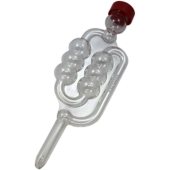Insects are going after the compost because it offers something they are looking for:
-food
-moisture
-warmth
-a breeding environment
FOOD
Regardless of the stage of decomposition, most of the material in that bin will offer a food source for some kind of insect. It may not be the orange peel the bugs eat, but the bacteria and decomposed material which offers a delicious meal. Insects have a limited digestive system. Organic matter that has broken down makes it possible for some insects to consume what they could not otherwise ingest.
MOISTURE
Bugs need water same as everything else but they don't much. Standing water such as a birdbath does not offer a stable surface to land on whereas moist grass clippings provide purchase from which the bugs can slurp up the water they need. There is no getting away from moisture if you wish to compost.
WARMTH
The warmth is important when the seasons are changing. Bugs have a different way of seeing the world and can detect infrared (heat) as well as UV sources. Being a cold blooded creature, they'll be drawn to it. At this time of the year it's not a factor.
A BREEDING ENVIRONMENT
Bugs eat, mate, breed. That's what they do. A warm, moist, food rich compost bin is an ideal environment. As long as the bugs are hanging around eating and drinking, they'll find a hugger and set to work keeping their genes pool alive. For momma's precious little snowflakes, it's hard to beat a compost heap for egg laying. From the perspective of the compost maker, the bugs are good workers helping to decompose the material.
With all this in mind, the task is to make the compost less attractive to the bugs. Bugs have 2 primary methods of detecting your compost: light (including IR) and chemical. Those antennae are able to detect the odors emanating from the compost. Evaporating moisture will carry chemical signals through the air. Looking at your
compost bin I see it is essentially an inverted trash can with solid sides. There is some ventilation on the bottom, but not enough to allow the material to dry out. This is by design as these small containers need to retain the moisture in order for the contents to decompose. If that same volume was a heap o the ground it would be able dry out completely, weather permitting.
That small volume won't heat up to such an extent as would a cubic yard heap. It's just not big enough for the thickness and depth of material to serve as insulation. We can eliminate visual cues as a reason for drawing the bugs. This leaves odor as the attraction.
The compost bin does not have to be a reeking cesspool. Light odors will be enough to draw in the bugs. Looking at the bin there are vents on the bottom and what appear to be vents on the top. What you have, in effect, is a chimney. You toss in new material, stir it up. This keeps it loose and allows air to flow. There will be some warmth which will create some airflow. In that air is moisture and chemical signals. It's a big neon sign for bugs. Those plastic bins retain much more moisture than an open heap. Those open heaps dry out on the outside. Once again, it's the thickness and depth of dry material that absorb that moisture before it passes out of the heap. The moisture will still move through eventually, but in the meantime it is a barrier preventing access to the moist material which the bugs need to eat, drink, and propagate.
Once you use the material in your garden or containers, you'll have the same effect: a dry surface acting as a barrier. The core of the planter will still be moist but the bugs won't be able to get to it in such numbers that they become a problem. I hope that answers your question.
There still exists the problem of the bugs in your bin. I suggest leaving the cover off to let it dry out some. You could also add some dry material to reduce the moisture level inside the bin.






